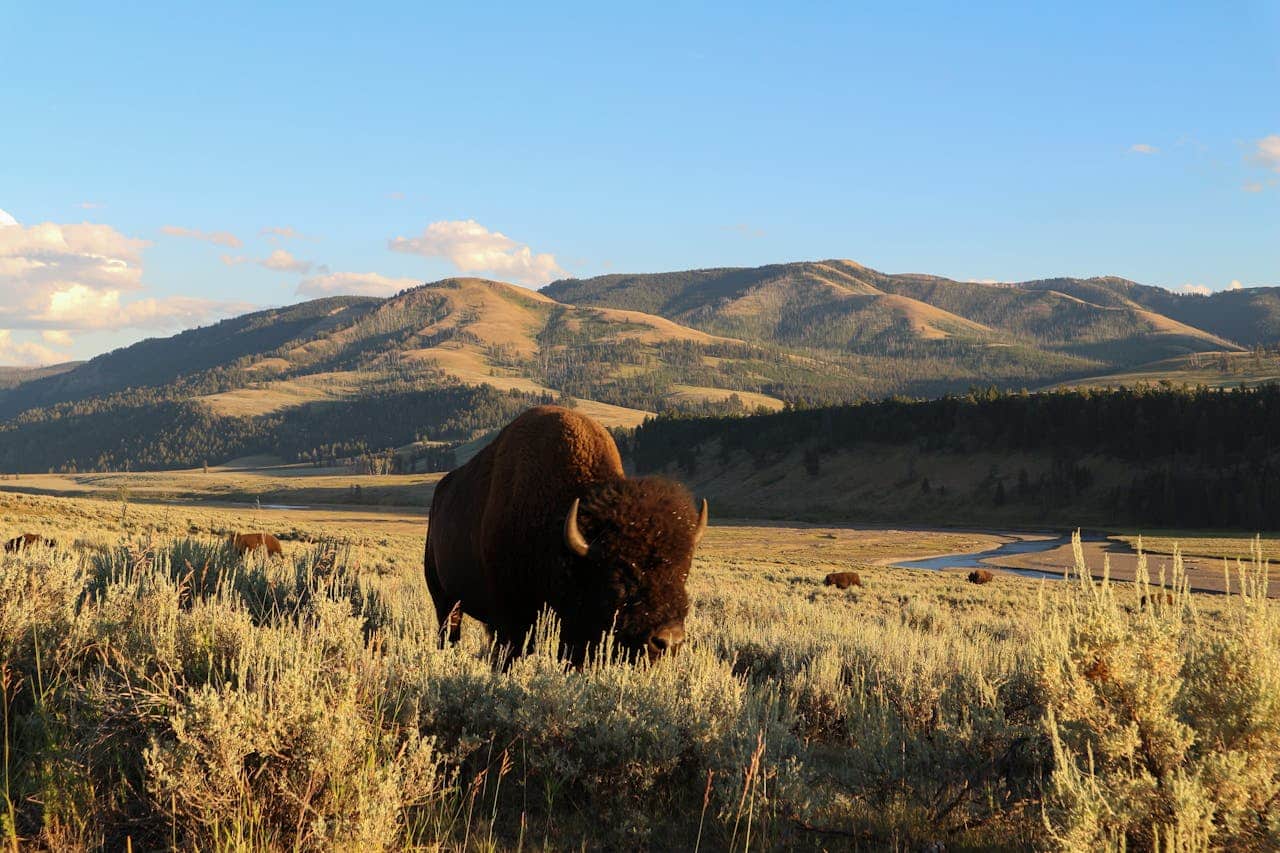
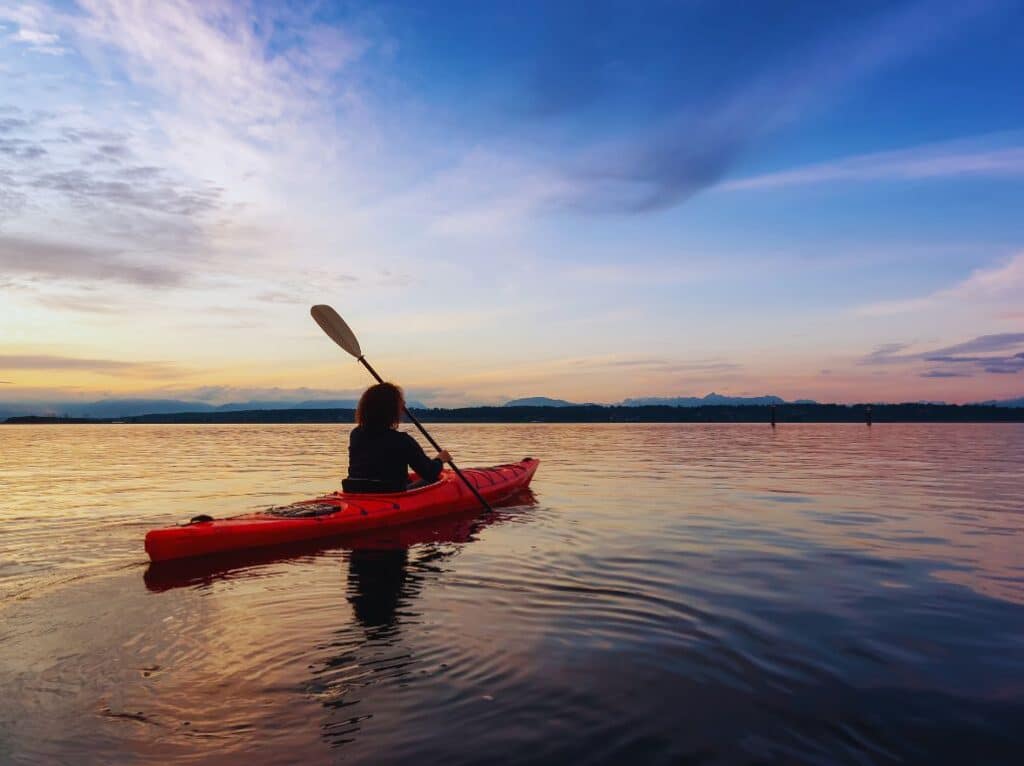
The Montana Style is a participant in the Amazon Services LLC Associates Program, an affiliate advertising program designed to provide a means for sites to earn advertising fees by advertising and linking to Amazon.com
Welcome to Explore Montana Outdoors! As seasoned experts in all things outdoor, we know the beauty and thrill of a kayak camping trip is incomparable. Knowing how to pack a kayak for camping is crucial for starting your adventure
But turning the adventure into a memorable one involves perfect packing skills. In this comprehensive guide, we’ll share diligent tips and tricks on how to pack a kayak efficiently for camping with you.
We aim to prepare you for every outdoor expedition, ensuring your safety, comfort, and, most importantly, enjoyment.
Let us guide you on this preparation journey so you can focus on exploring and embracing the great Montana outdoors.
One might wonder why go kayak camping. Well, it’s simple. Kayak camping offers an adventure like no other. It combines backpacking and paddling, bringing together the best aspects of both.
When you decide on a multi-day trip, kayak camping allows you to see, explore, and truly connect with nature in a way that traditional camping or backpacking alone can’t offer. E
Expert camper Jeffrey Lee often mentions that trips spent kayak camping are his most memorable ones. You’re not simply observing nature; you’re participating in it.
Your days are filled with paddling and navigating through calm or challenging waters, while your nights are spent under the stars.
Unlike other trips where you hike to your destination, kayak camping propels you through varying landscapes—each full of its own unique charm.
While backpacking and traditional camping provides their joy, the lure of kayak camping lies in its fusion of water and land exploration. It’s a test of strength, navigation skills, and preparation.
That’s why, at Explore Montana Outdoors, we believe that a well-planned multi-day trip is the epitome of true outdoor adventure, mainly when it involves kayak camping.

One summer, my son and I decided to embark on a kayak camping trip along the serene waters of Lindberg Lake, Montana. We packed our kayaks with the essentials – tents, fishing gear, and hearty trail snacks. As we paddled through the crystal-clear waters, surrounded by the majestic Rocky Mountains, I couldn’t help but feel a deep connection to nature. Each evening, we’d set up camp on a different shore, our tents just a stone’s throw from the gentle lapping of the waves. The simplicity of these moments – cooking over an open fire, sharing stories under the stars, and waking up to the soft sounds of the lake – brought us closer, not just to each other, but to the raw beauty of the wilderness. It was in these moments of peaceful solitude, away from the hustle of everyday life, that I genuinely appreciated the charm of kayak camping – it’s not just an adventure, it’s a way to reconnect with the world and with each other.
Kayak camping trips offer a unique charm, combining the thrill of paddling with the tranquility of camping. If you’re someone who loves the great outdoors, there’s something incredibly appealing about spending a day on the open water in your kayak, followed by a night under the stars at one of Montana’s pristine campsites.
Packing for kayak trips, however, can be a little tricky. You’ve got limited space and must ensure you’ve got all the essential items. It’s a delicate balance deciding which items to bring on your trip.
The key to successful kayak packing is ensuring everything you bring is compact and lightweight. But that’s not all; your items also need to be waterproof.
Nothing can ruin a kayak trip quicker than a wet sleeping bag or a soggy sandwich. Thanks to advances in outdoor equipment, there are now specialized kayak bags that are lightweight, robust, and waterproof.
These bags make it much easier to pack for your kayak camping trips and ensure that your items remain dry throughout your adventure.
Time spent paddling your kayak on the open water can be serene and refreshing, but don’t minimize the importance of packing correctly. You only have one shot to get it right, but with proper preparation, your kayak trips will become memorable journeys of exploration in Montana’s breathtaking wilderness.
What’s one thing that elevates kayak camping to its own realm? It’s undoubtedly the unique alchemy of place, the items you bring, and the impeccable chariot that is the kayak.
Kayak camping lets you experience nature’s heart, uncovering hidden nooks and crannies along waterfronts inaccessible by other means.
Imagine kayak-skimming over tranquil waters, guided by the hushed rustle of the reeds. You’re not just visiting these places; you become part of them.
Yet, one does not just jump into a kayak and set off. The whole trip rests on the clever strategy of packing the right items efficiently.
Ensuring your items are waterproof is essential in kayak camping. No one wants a soggy sleeping bag or waterlogged food items! Invest in waterproof gear bags, containers, and stuff sacks.
They are essential to protect your stuff from the inevitable splash or rain shower.
Placing these items within your kayak can also make or break your voyage. Keep the center of gravity in mind; heavier stuff should be loaded toward the middle of the kayak.
Take the challenge; embrace the methodical Tetris game, packing your kayak. With practice and patience, these things can become as natural as paddling.
After all, it’s not just about the destination – the distinctive journey makes kayak camping special.
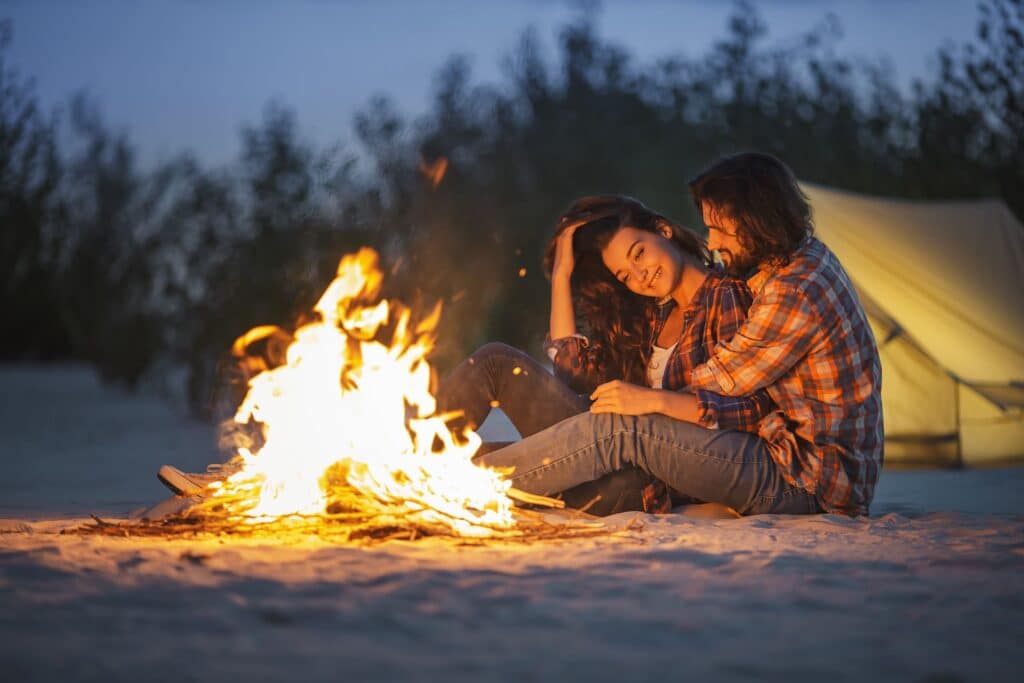
Whether you’re a seasoned adventurer or a novice, packing a kayak for camping can be daunting. It’s not just about packing everything you will need; it’s about the weight distribution and ensuring your safety while on water. When packing, consider the weight of each object.
While it’s necessary to pack everything for your survival and comfort, it’s equally essential that the total weight of your equipment does not hinder your kayak’s performance.
One common mistake is packing the heaviest items first, causing an uneven weight distribution. Pack the light items at the ends and the heavy ones towards the kayak’s center to prevent this.
Throughout the packing process, distribute the weight evenly to avoid tipping your kayak over or capsizing. Keeping the center of gravity low is critical in maintaining stability.
You don’t have to pack everything in your house! Keep it simple and pack just the essentials. Remember, you’re packing for an adventure, not a luxury cruise.
There’s a certain charm to the simplicity of kayak camping, and packing efficiently is part of the journey. Even when things fail to go according to plan, keeping everything in balance makes kayak camping unique.
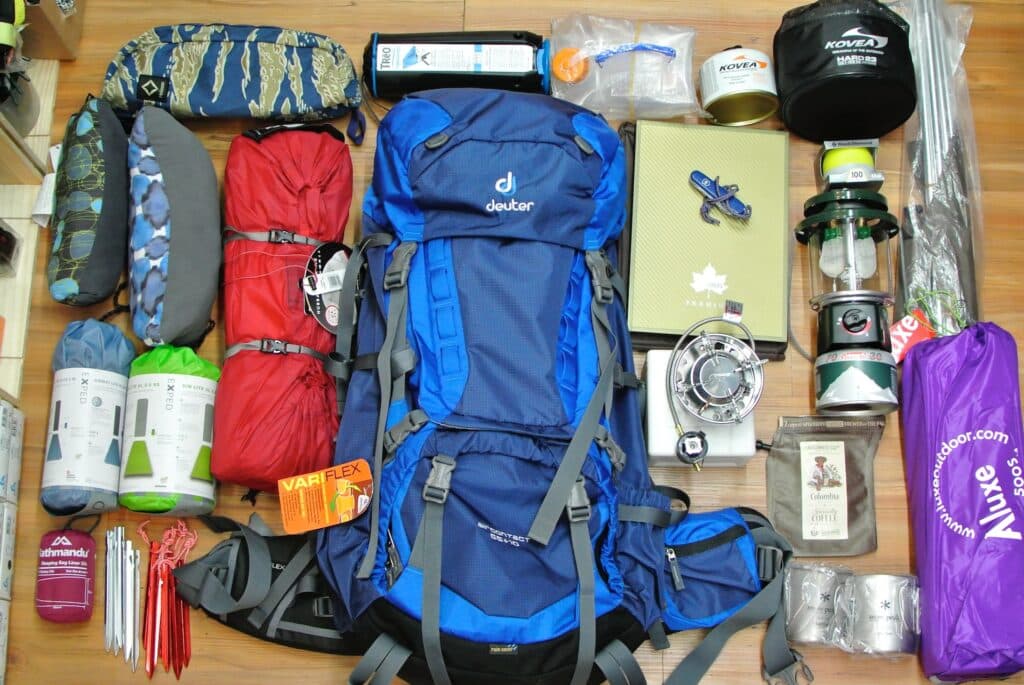
Regarding kayak camping, it’s essential to consider the weight of the stuff and things you’re packing.
The weight can make a lot of difference in how your kayak handles water. Know this – the weight your kayak can hold isn’t just about the stuff you bring for your life on the water—it’s also about keeping you and your kayak safely afloat.
A kayak isn’t like a traditional camping pack—you can’t simply stuff it full of things. It’s about balance. Filling your kayak to the brim could seriously affect its buoyancy.
If you’re too heavy, your floating ride transforms into a dredging paddle. But don’t fret! With careful planning, packing your kayak doesn’t have to feel like a game of Tetris.
Your paddling experience could take a lot of weight or a little, based on your kayak model. Typically, a kayak can safely hold around 250 to 300 pounds.
Remember, this includes your weight, the weight of your gear, and any water you’re carrying. Be conscious that too much weight hinders the kayak’s performance.
Explore Montana Outdoors advises to keep the weight down. Use lightweight items, divide the weight equally, and keep the heaviest items close to the kayak’s midpoint – this way, you’ll enjoy your paddling adventure with a sense of freedom on the water.
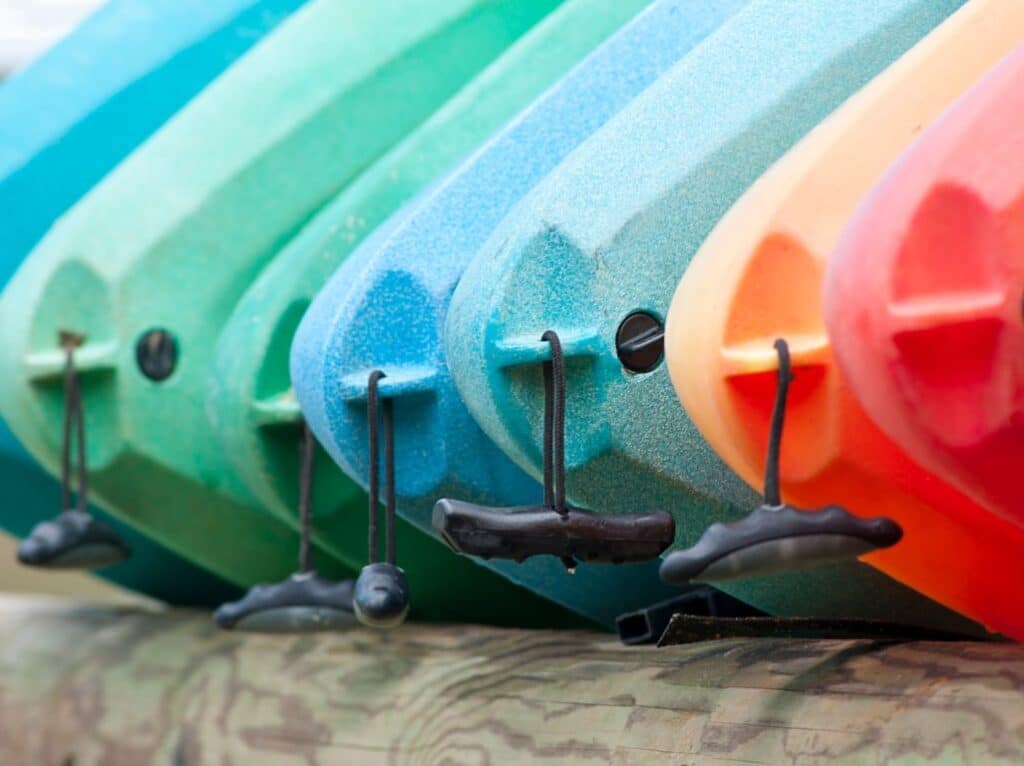
There’s good news for kayaking enthusiasts who want to ascend from simple paddling to overnight trips or multi-day kayak camping. When packing kayaks, the key is to balance the weight.
Kayaks can hold surprising amounts of camping equipment, but it’s all about weight distribution.
Remember that the design and type of your kayak, whether it’s a canoe-like sit-on-top or for maneuvering through whitewater, will influence the packing strategy.
First, life-saving equipment such as Personal Flotation Devices (PFDs) is non-negotiable—it goes into the packing list first.
Next, prepare for all possible scenarios. While we hope you never flip, planning for it is a must. Packing essential survival gear such as food and water should take priority. Then, you can plan to arrange your packable kitchen, adventure tools, and camping gear.
Strive to distribute the weight evenly, front-to-back and side-to-side, to maintain your kayak’s stability in the water. Remember, a well-packed kayak aids performance and safety, ensuring a memorable trip.
So, follow these insights from Explore Montana Outdoors and make the most of your kayaking adventures.
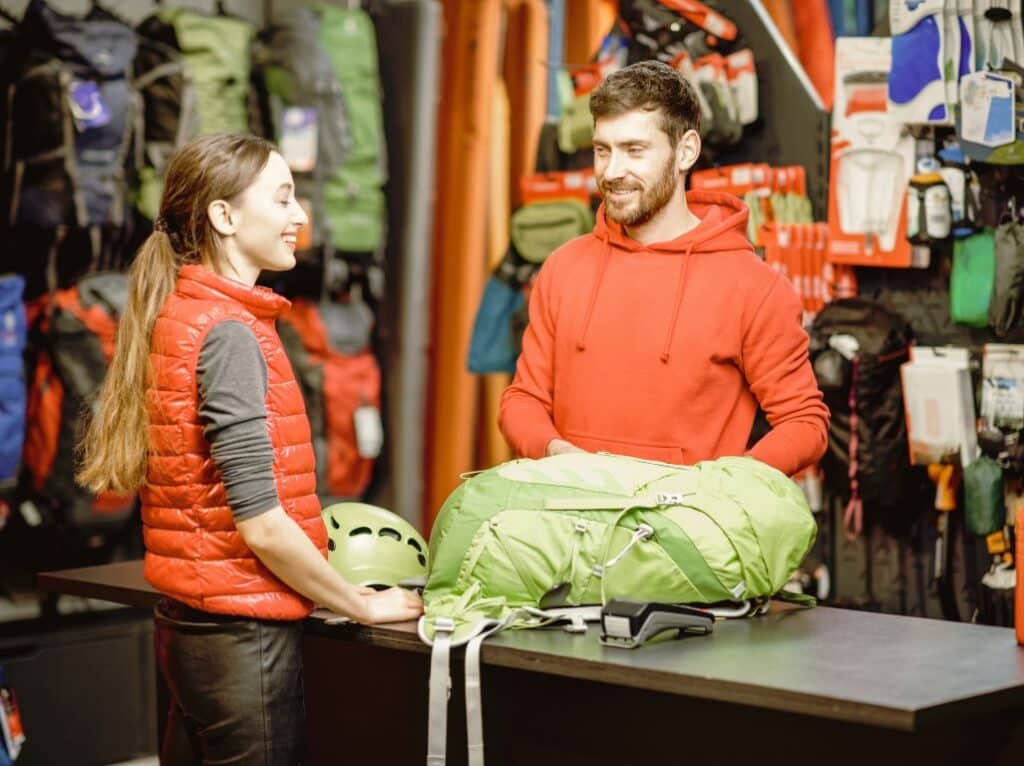
Kayak camping trips weave the allure of water-based exploration with the rustic appeal of wilderness camping. But what truly separates an exceptional trip from just an okay one is your camping gear.
Indeed, having the right gear is paramount, as it can significantly affect your outdoor experience. When preparing your camping gear, the first rule to remember is that it’s not just about cramming gear everywhere.
The art of expertly packing a kayak focuses on balance and weight distribution.
Your kayak can hold a substantial amount of weight, but you must pack efficiently for stability on the water.
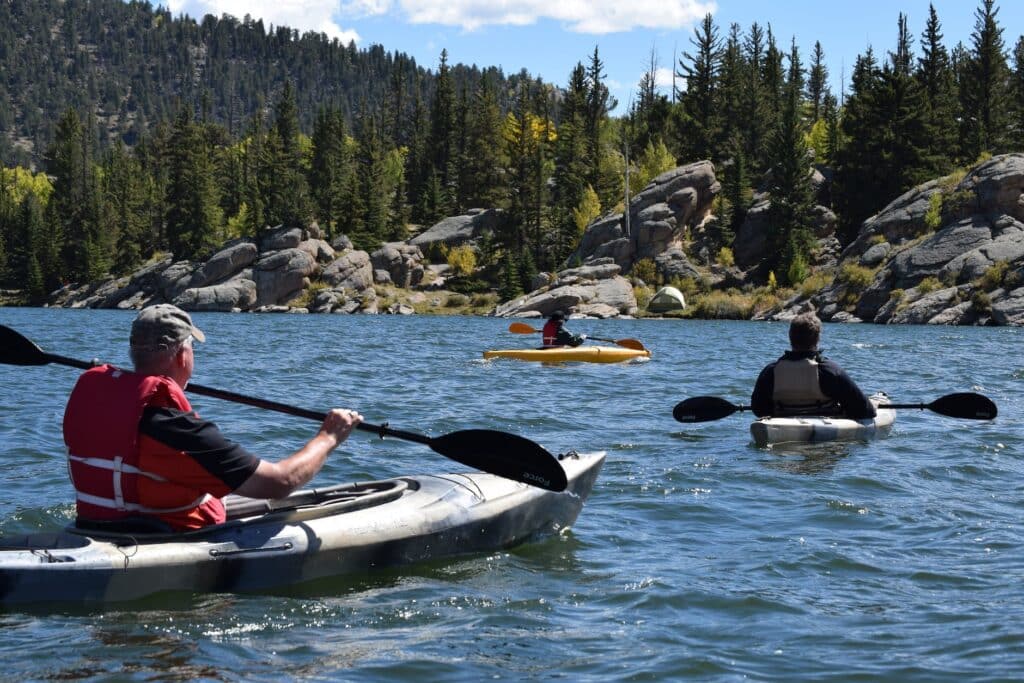
While assembling your gear, consider what you’ll need at your campsite. Setting up a comfortable campsite significantly contributes to the quality of your trip.
Look beyond the basic camping gear; consider comfort items and gear that uphold your security in the wilderness. It’s about the details, such as a mallet for securing your tent or a headlamp for navigating the dark. A packing checklist is handy, especially for first-time kayak campers.
A list can guide you through packing essentials and ensure you don’t neglect crucial items.
Lastly, don’t forget the golden rule of camping, ‘Leave no Trace.’ Pack gear that minimizes your impact on the environment.
One of the most essential pieces of your gear while preparing for your kayak camping trip is a good sleeping bag.
An ardent camper or hiker knows just how important a good night’s rest can be for the perfect camping or hiking experience. Moreover, the ‘good’ in a sleeping bag becomes crucial when it’s kayak camping.
A padded, temperature-regulating sleeping bag can distinguish between a refreshing morning on your camping trip or an uncomfortable awakening, leaving you disappointed in your kayak.
When packing a kayak for camping, you may feel burdened by the weight limits. However, expert hikers and kayak campers concur that a sleeping bag is an item you cannot, and should not, skimp on.
Choosing a lightweight and compact bag, then, becomes key. These bags have been designed to offer comfort while fitting snugly into your kayak storage space.
So, as you plan your camping trip, remember that your bag is not just a bag. It’s your assurance of a good night’s sleep under the stars, making your camping experience even more special.
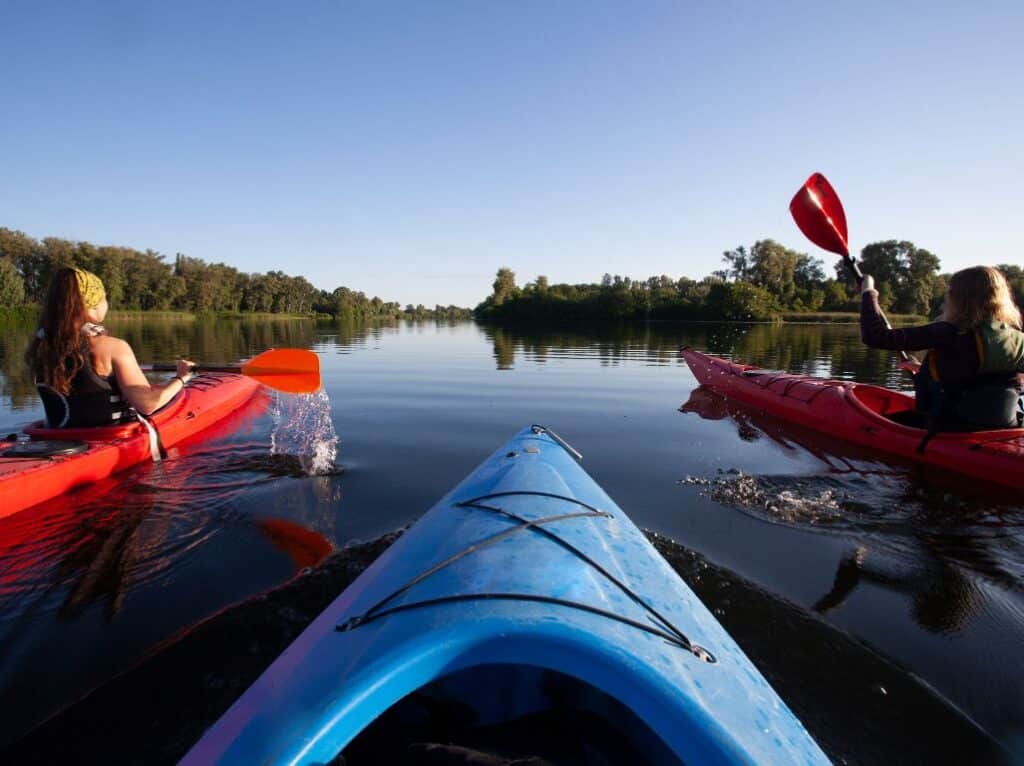
In your plan for your next kayak camping trip, remember that the little things greatly enhance the experience. A well-packed kayak can indeed be a game-changer.
Many campers, especially beginners, overlook the importance of thoroughly planning their packing. Not only will you be paddling water, but you may also encounter trails that require hiking. Here are some tips for your trip:
Stuff all your essentials in a way that balances your kayak. It will make your trip exceptionally smoother on the water and off when treading hiking trails.
Organize things in a waterproof bag and make sure they are easily accessible. Store enough water for the whole trip. Remember, on such trips, water is not just for drinking.
Some may find themselves needing water for cooking or, in some cases, putting out a campfire.
Last but not least, always have a backup plan. No matter how often you have been on a trip, it is always wise to think ahead.
A well-planned trip demonstrates a lot of foresight, which can guarantee a successful kayak camping trip!
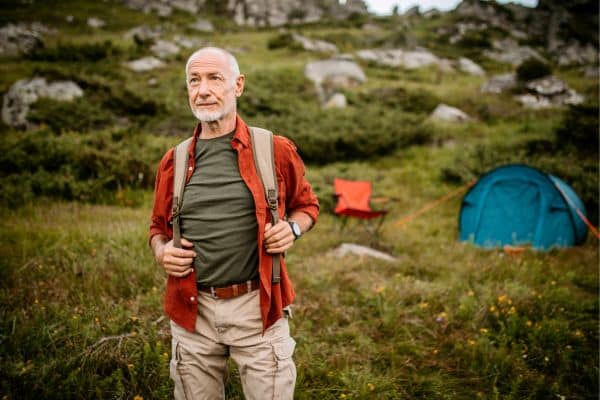
As an avid outdoor enthusiast, kayak camping is a unique experience that requires proper planning and the right equipment.
Choosing Your Kayak for Camping is a critical step you can’t afford to overlook. Why? The type of kayak you choose directly affects your camping trip.
A fishing trip may require a different kind of kayak than a leisurely trip. Understanding the importance of the kayak selection process is key to ensuring a successful kayak camping trip.
When considering various kayak options for your camping trip, one vital tip to remember is the storage capacity.
The more gear you plan to pack, the larger the kayak’s storage compartment needs to be. Stability is another factor to consider, especially regarding packing.
You want a kayak to safely carry your weight and the packed gear without tipping over.
Whether you’re an experienced angler planning a fishing trip or a beginner embarking on their first kayak camping journey, making the right choice of kayak is crucial.
This guide provides handy tips and expert advice to help you choose the best kayak for your camping needs, ensuring you have an enjoyable trip.
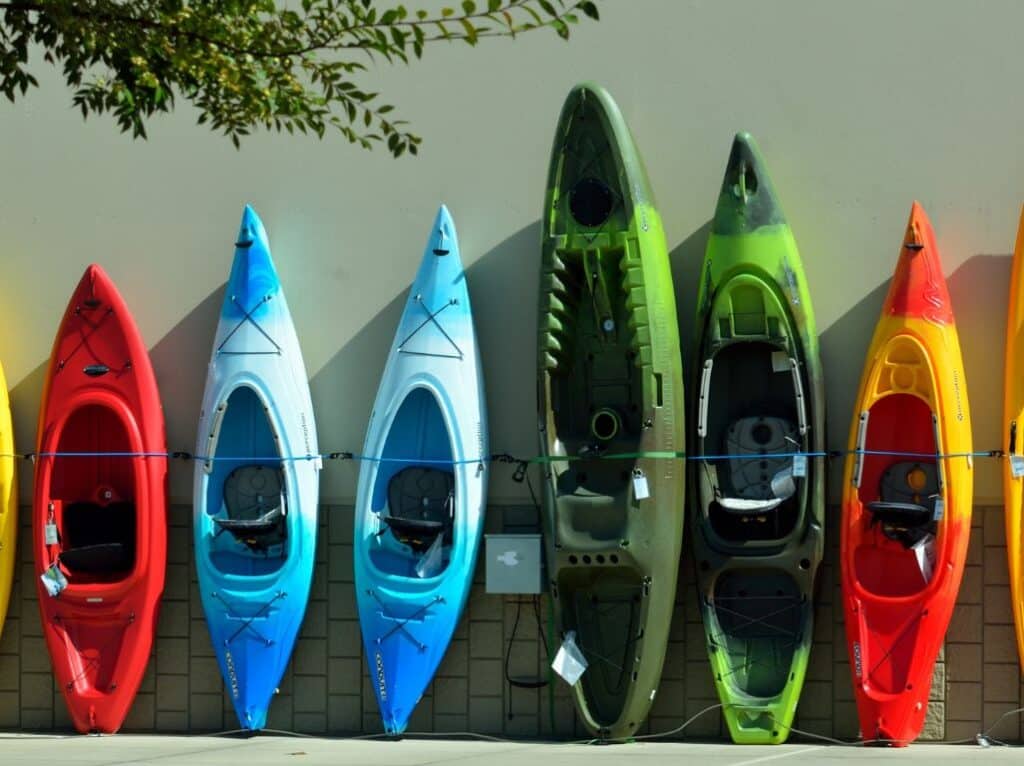
Choosing the right kayak type for camping is critical to a satisfying and successful adventure. One must consider their primary purposes — fishing, navigating through white water, or indulging in a serene boat ride across a calm lake.
If fishing is your primary goal, a fishing kayak, with its stability and storage space, is a solid choice. For the adrenaline junkies craving a water thrill, a whitewater kayak, smaller and designed for maneuverability in fast-moving waters, would be the apt boat.
And for those who seek tranquility, a touring or sea kayak, built for smooth and steady waters, would be the perfect boat.
But all these choices boil down to one key factor: comfort. Your kayak is your life on the water during a camping trip. It’s your boat, resting place, viewing platform, and sometimes even your dining room.
Hence, your chosen kayak must meet your comfort and camping requirements. As they say, no one boat fits all. Your kayak, your camping adventures, and indeed, your life on the water – it’s all shaped by the choices you make.
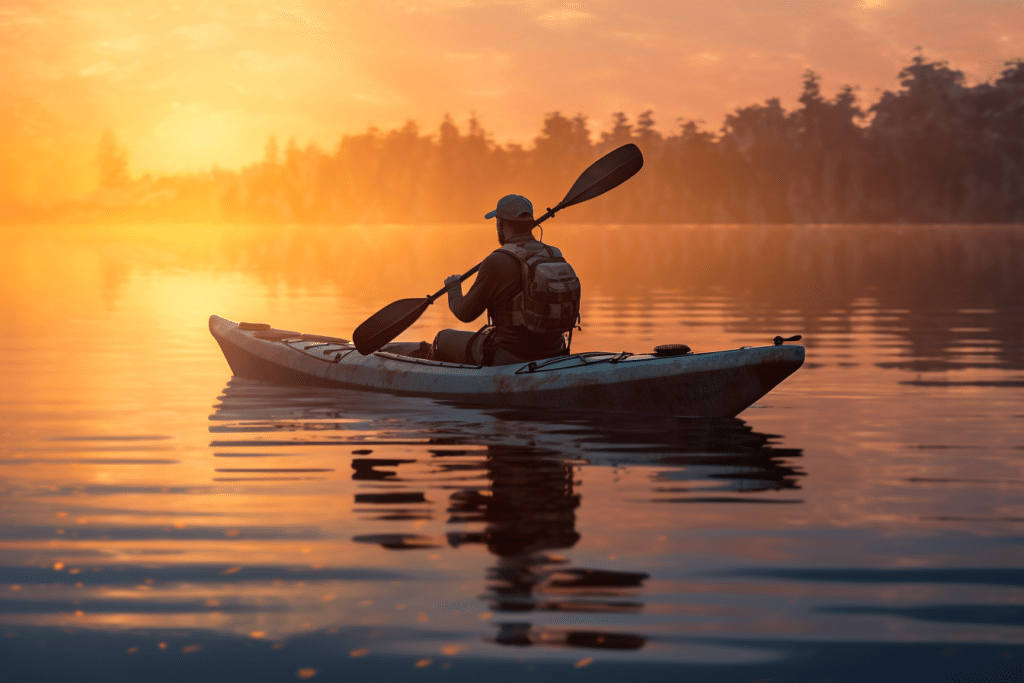
So, you’ve got your kayak, and you’re ready to go kayak camping. But how do you effectively pack everything into your kayak?
You need a guide with good tips, and that’s precisely what this is. First things first, not every boat will do. Your choice of kayak for kayak camping makes a massive difference.
A kayak designed for camping trips has space in the hull for storing equipment. That’s crucial when you need to bring almost everything to survive in the aurora-lit wildernesses of Montana.
Further tips in this guide will touch on your equipment checklist. You need to make good use of the space in your kayak. This means strategizing when you pack your kayak.
Weight distribution is a precise science. If there is too much weight at either end, your kayak will be more challenging to control. And remember, a swamped boat is no fun, so secure everything just right.
Your checklist should include essentials such as a kayak-friendly sleeping bag and all the little things that make camping trips memorable.
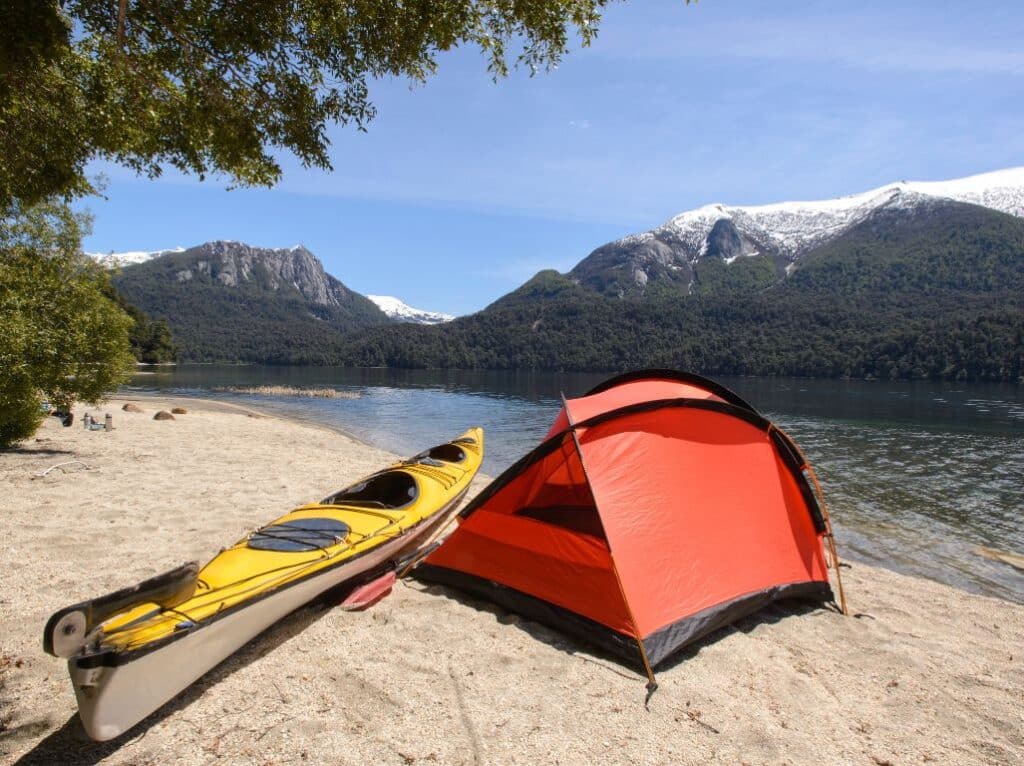
Last summer, my nephew and I decided to tackle a kayak camping trip down the serene Flathead River. It was his first time, and he was buzzing with excitement. We spent the night before prepping our kayaks, carefully balancing camping gear with enough supplies but not too much to weigh us down. The morning sun was peeking over the mountains as we set off, the river calm and inviting. I remember telling him, ‘Keep your gear secure and your mind open.’ We spent three days paddling, exploring hidden coves, and camping under the stars. He learned to navigate the gentle rapids and grew more confident with each stroke. It was more than a trip; it was a rite of passage. Tired but fulfilled as we loaded the kayaks back onto the truck, he turned to me and said, ‘Uncle Trevor, I feel like I can take on the world now.’ That moment, right there, is why I cherish the outdoors – it’s not just about the journey; it’s about the growth along the way.
When it comes to kayak camping, there’s a lot to plan. This adventurous trip is more than just a view from the water; it’s truly an enriching life experience.
So, before you set out, ensure you’ve thoroughly checked all the essentials you’ll need to pack in your kayak. Preparing your kayak for camping is not just about dumping all your gear onto it.
A good amount of thought needs to go into where to place what to guarantee your kayak’s agility and stability on the water.
The secret to a successful kayak camping adventure lies in managing your load.
Since the central part of your journey involves being on the water, judicious weight distribution in your kayak plays a pivotal role.
Consider the type of trip you’re planning, the on-water conditions you’re likely to face, and even tiny aspects like the duration for which you’ll need fresh water.
All these points will have a bearing on how you pack your kayak. Which kayak is best for camping, you may ask.
The choice depends mainly on personal preference and the nature of your chosen campsite, but versatility is critical.
Also, never underestimate the importance of the little things on your adventure. Items you may consider insignificant, like a good quality sleeping bag, can greatly enhance your overall kayak camping experience.
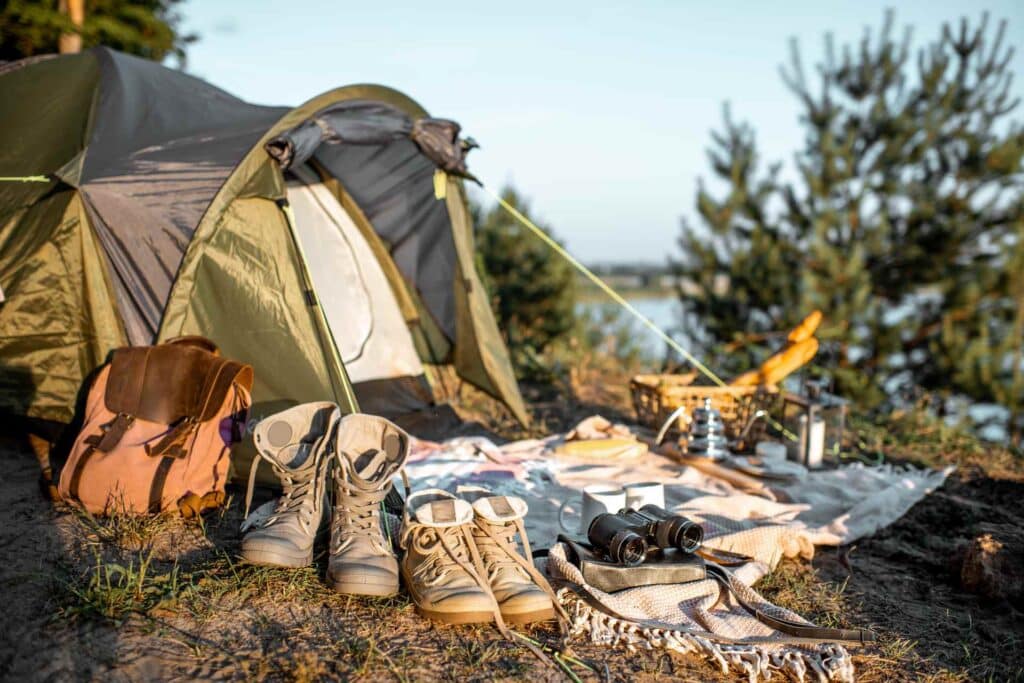
Let’s make the final preparations before your kayak camping adventure! It’s essential to revisit every plan for your camping trip. Planning meticulously will protect you from unwelcome surprises.
Whether it’s your first time kayak camping or you’re an experienced expedition member, double-check your equipment. Perhaps you missed out on bringing one extra lightweight dry top?
That sneaky gear item could make or break your kayaking experience. Your boat should be ready. Check that boat again. Will it withstand the proposed amount of water you plan to tackle?
Paddling might become pretty tough if you underestimate the water on your route.
Paddling in severe water conditions? Then, revisiting your rescue skills should be the top priority. Experienced members often repeat this mantra: Safety first!
No amount of water should deter a well-prepared kayaker with solid paddling skills. So, paddle and paddle some more before the big day.
Don’t forget to voice your thoughts and exchange comments with your group. Also, feel free to reply or ask for tips if you have any doubts.
Adequate insight about the product you’re bringing is a boon for any kayaking enthusiast.
Lastly, why not explore various camping possibilities with your trusted boat? Kayak camping is bound to enrich your expedition group’s experience. So gear up and get fluid with your paddling.
Remember, every plan, every trip, and every piece of equipment counts when you embark on the thrill that is kayak camping.


The Montana Style is a participant in the Amazon Services LLC Associates Program, an affiliate advertising program designed to provide a means for sites to earn advertising fees by advertising and linking to Amazon.com
To learn more about Trevor Riggs, please visit our About page.
The Montana Style is a participant in the Amazon Services LLC Associates Program, an affiliate advertising program designed to provide a means for sites to earn advertising fees by advertising and linking to Amazon.com